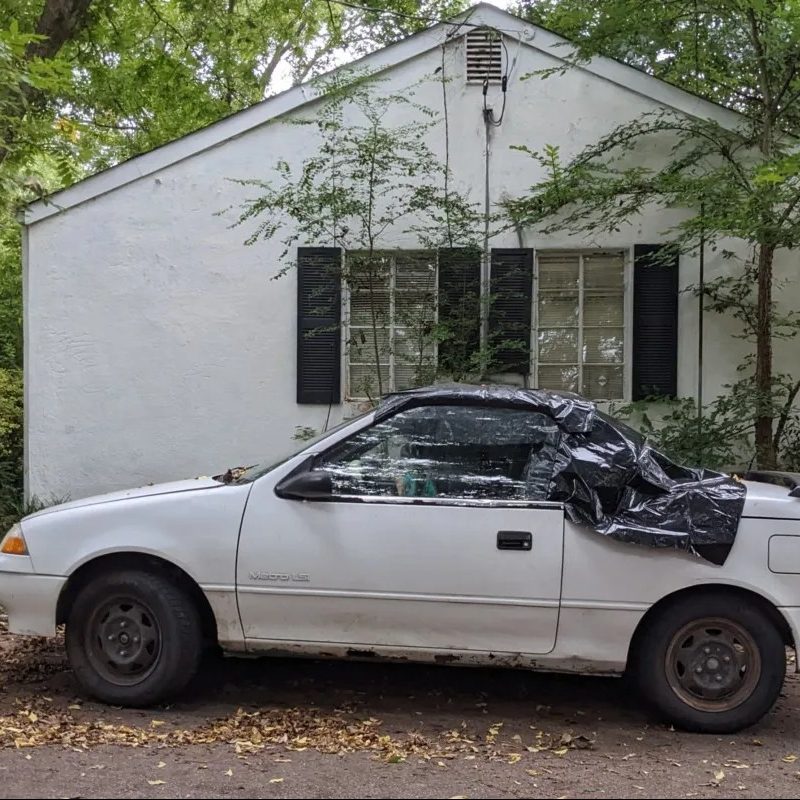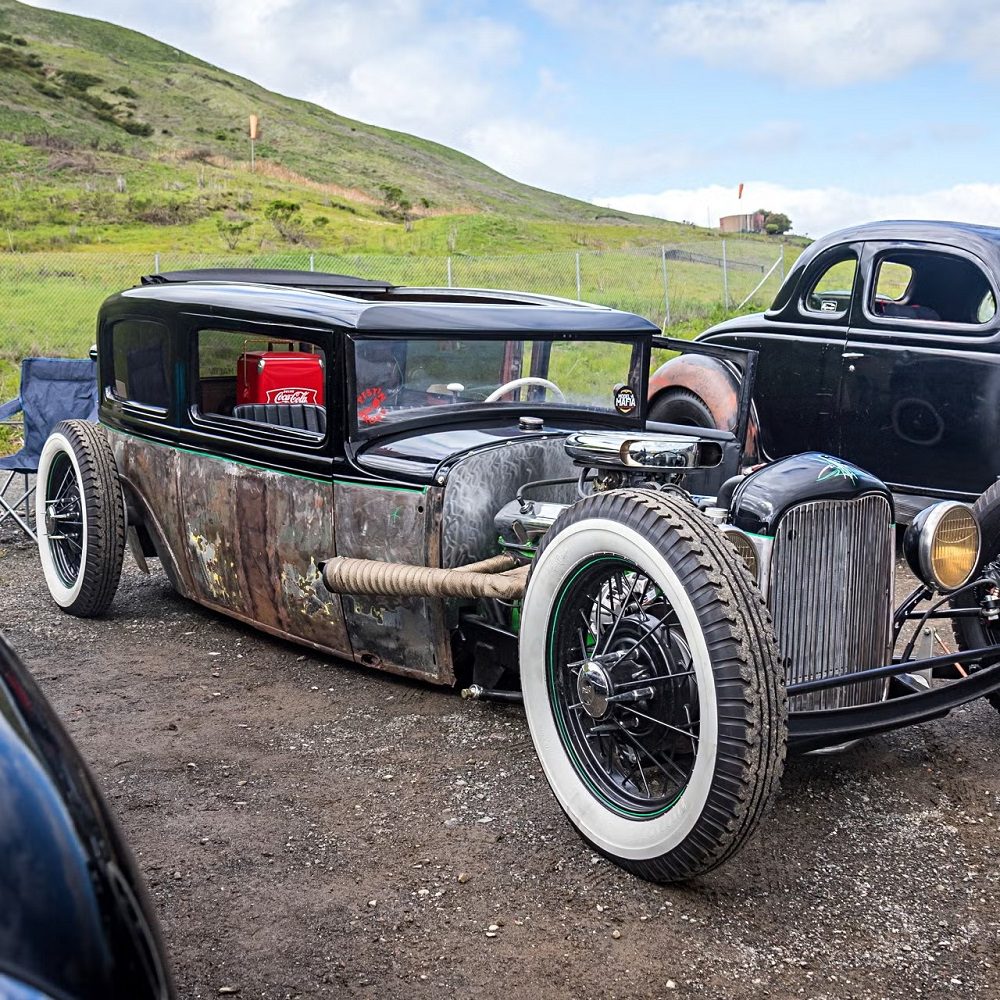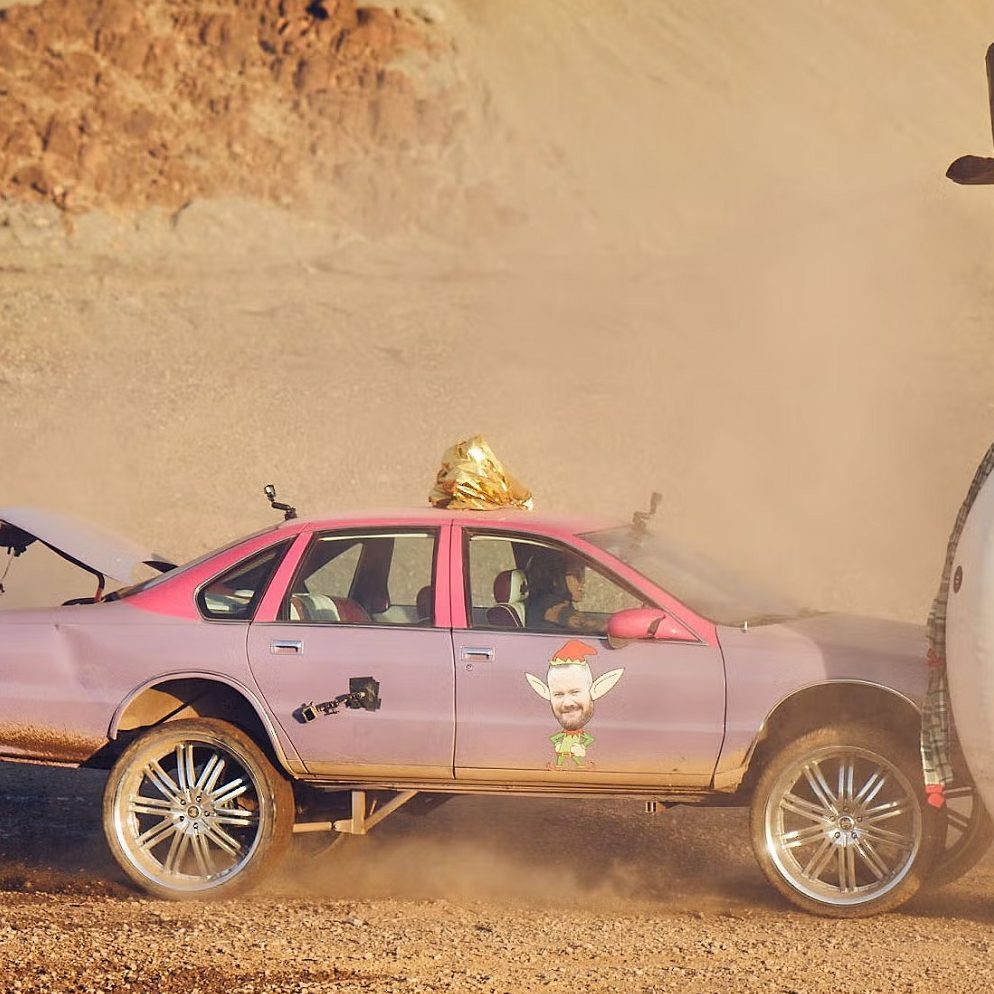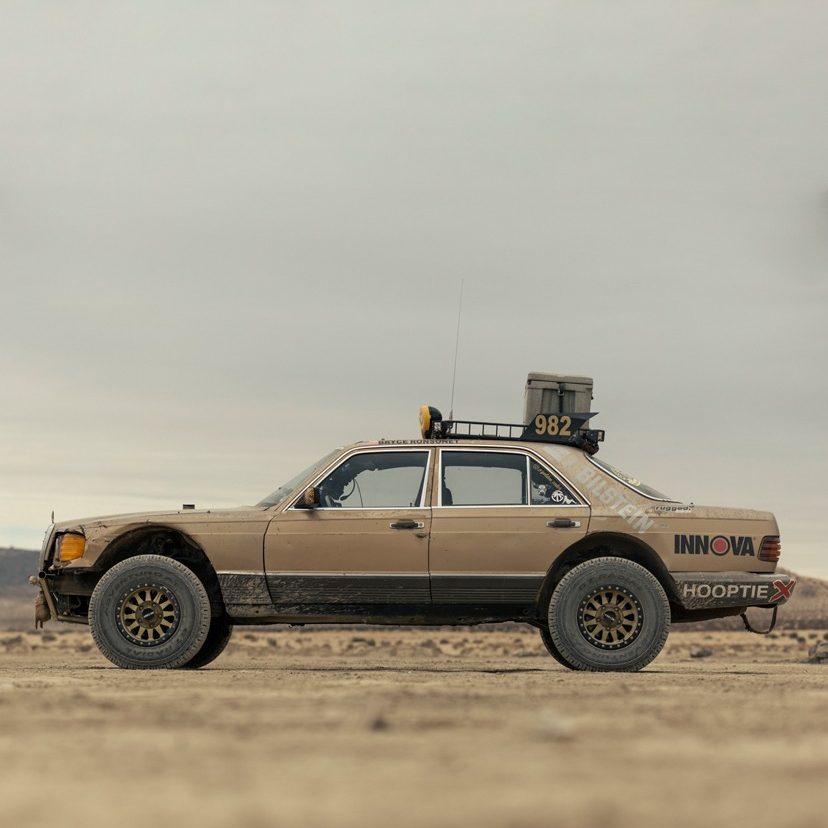What is a Hooptie Car?
Definition and Origin of the Term
A hooptie car is a slang term for old, beat-up vehicles. These cars are usually inexpensive, and their condition often reflects their age. The term “hooptie” became popular in the United States, especially in urban communities. Many believe that the term originated from African-American slang in the 20th century. People think “hooptie” might be derived from “hoopty,” which referred to poorly maintained cars. People started using the term humorously to describe vehicles that were far from perfect but still functional.
Common Characteristics of a Hooptie Car
Hooptie cars have distinct features that make them unique. Here are some common characteristics:
- Rust and Dents: Hoopties often have visible signs of wear, like rust, dents, and scratches.
- Unusual Noises: These cars might produce squeaks, rattles, or engine noises while running.
- Unreliable Functioning: Window mechanisms or the air conditioner might not work properly.
- Odd Repairs: Makeshift fixes, like duct tape on bumpers or wired-together parts, are common.
- Low Resale Value: Hoopties are typically very affordable compared to newer models.
- High Mileage: Many hoopties have been driven well beyond 100,000 miles or more.
Despite their flaws, hooptie cars often serve as reliable transportation for those on a budget. They are also known for their character, making them beloved by some car enthusiasts.

The History of Hooptie Cars
Cultural Background and Popularity
The term “hooptie car” has deep cultural roots, especially in the United States. Emerging from African-American slang, it became widely recognized during the 20th century. Hoopties were often seen in urban communities where affordable transportation was essential.
These cars gained popularity for their affordability and durability despite their condition. They represented resilience and the ability to adapt, symbolizing a practical choice for those with limited resources. Over time, hoopties became more than just old or beat-up cars. They turned into a unique cultural phenomenon, embraced by communities as symbols of creativity and nostalgia.
In the 1980s and 1990s, hoopties gained even more recognition in urban areas. People would add their personal touch by modifying and customizing these vehicles. From inventive patchwork repairs to quirky accessories, hoopties became statements of individuality. This sense of ingenuity and style helped fuel their cultural significance.
Hooptie cars also became a relatable concept for many. They showcased that a vehicle could still have value even if it had imperfections. Today, the term remains popular, reflecting a long history of making the most out of what you have.
Influence of Movies and Music on the Term
Movies and music have played a significant role in popularizing the concept of hooptie cars. Pop culture has celebrated these vehicles, cementing their place in the public imagination. Hip-hop, in particular, has highlighted hoopties as symbols of everyday life. Many hip-hop artists embraced the term in their lyrics, turning hoopties into iconic cultural references.
One of the most famous examples is the 1992 hit song “My Hooptie” by Sir Mix-a-Lot. The track humorously glorified the experiences of driving a hooptie car. This song introduced the term to a wider audience, giving it a permanent place in pop culture.
Movies also contributed to the recognition of hoopties. Films set in urban neighborhoods frequently featured these cars to reflect authenticity. Hooptie cars became visual markers of characters from working-class backgrounds, further emphasizing their cultural significance.
The influence of music and movies ensured that hoopties became more than just neglected cars. They turned into symbols of survival, humor, and creativity, showcasing the power of popular culture to elevate everyday life experiences.

Why Are Hooptie Cars Still Popular?
Hooptie cars remain popular for their practicality, affordability, and distinct charm. Despite their age and imperfections, these vehicles serve as reliable transportation for many people. They help drivers save money while still getting from one place to another. The cultural significance and personal character hooptie cars carry also contribute to their lasting appeal.
Affordable Transportation Option
One of the key reasons hooptie cars are still popular is their affordability. These older vehicles are typically sold at very low prices, making them accessible to people with limited budgets. Buying a hooptie car is often cheaper than purchasing a new car or leasing a vehicle, especially for students or individuals just starting out financially.
Moreover, hooptie cars allow owners to save money on insurance premiums. Insurance for older cars tends to be cheaper compared to newer models. Since these vehicles are less valuable, the cost of coverage is lower, easing financial burdens.
Repair costs for hoopties can also be manageable. Owners often rely on affordable and creative solutions to fix issues, such as using duct tape for simple repairs or sourcing secondhand parts. These cars enable people to enjoy the convenience of owning a vehicle without breaking the bank.
Popularity Among Car Enthusiasts
Beyond utilitarian use, hooptie cars attract car enthusiasts who appreciate their unique charm. Their imperfections and aged appearance often make them appealing to individuals who value personality over perfection. Enthusiasts enjoy the opportunity to customize and modify hoopties to create one-of-a-kind rides.
Hoopties also bring nostalgia to car enthusiasts. Many of these vehicles represent a specific era and carry emotional memories. Restoring or maintaining a hooptie car can be a fun and rewarding experience for hobbyists who want to connect with the past.
Finally, hooptie cars are celebrated for their quirky and unconventional features. From mismatched paint jobs to homemade repairs, these cars have a distinct character that sets them apart from modern vehicles. Their flaws contribute to their charm, making them beloved icons among niche automotive communities.

Identifying a Hooptie Car
Understanding whether your car might be a hooptie can prove surprisingly simple. Hooptie cars come with distinct features that separate them from other vehicles. Let’s explore these characteristics and how you can differentiate them from classic cars.
Key Signs Your Car Might Be a Hooptie
- Exterior Wear and Tear: Hoopties often showcase rust, dents, and faded paint.
- High Mileage: Many hoopties have been driven over 100,000 miles.
- Odd Repairs: Duct tape fixes or mismatched parts are common.
- Unusual Sounds: Squeaky brakes, rattling engines, or grinding noises are typical signs.
- Functional Issues: Non-working windows, broken air conditioning, or chipped interiors suggest hooptie status.
- Low Resale Value: If your car has a low selling price, it may fall into the hooptie category.
Drivers often embrace the imperfections associated with hoopties, finding charm in their flaws.
How to Spot the Difference Between a Classic and a Hooptie
Distinguishing between classics and hoopties requires some observation:
- Condition: Classic cars are typically well-maintained or restored. Hoopties are neglected.
- Age vs. Care: Classics age gracefully with intentional care, while hoopties show regular wear.
- Value: Classic cars hold higher resale value due to rarity and historical significance.
- Purpose: Classics are often collected or showcased, while hoopties are used for affordable transport.
- Repairs: Classics feature professional restorations, whereas hoopties often have DIY fixes.
By focusing on these aspects, you can identify if your ride is truly a hooptie or a prized classic car.
Pros and Cons of Owning a Hooptie Car
Driving a hooptie car comes with both advantages and disadvantages. Let’s delve into both aspects.
Benefits of Driving a Hooptie
- Affordability: Hooptie cars are incredibly cheap to buy compared to newer models.
- Lower Insurance Costs: Older cars usually have reduced insurance premiums, saving you money in the long run.
- Accessible Parts and Repairs: Replacement parts for hooptie cars are often available at lower prices.
- DIY Repairs: Many minor fixes can use items like duct tape, wires, or secondhand components.
- Functionality: Despite their imperfections, hoopties are often functional and get the job done.
- Unique Charm: Hooptie cars often have a quirky, one-of-a-kind personality that owners love.
Many people value hoopties for their practicality and unique style. They serve as affordable solutions for transportation.
Common Challenges or Downsides
- Frequent Breakdowns: Hoopties often require more maintenance due to their old age.
- Limited Reliability: Some features, such as air conditioning or power windows, may not work properly.
- High Fuel Consumption: Older cars are less fuel-efficient than newer models.
- Lack of Modern Features: Hoopties typically lack high-tech features like built-in GPS or advanced safety systems.
- Low Resale Value: Their condition often makes these cars difficult to sell for a good price.
- Spending on Repairs: While cheap fixes are possible, repairs can add up over time.
Owning a hooptie can be a rewarding experience but comes with trade-offs. Carefully weigh the pros and cons before deciding to own one.

Tips for Maintaining a Hooptie Car
Owning a hooptie car means you have a reliable but aged vehicle. Proper maintenance can make your car last longer and run more efficiently. Let’s explore some tips to keep your hooptie running smoothly.
Affordable Maintenance Practices
Maintaining a hooptie car doesn’t have to drain your wallet. Here are some cost-effective tips:
- Regular Oil Changes: Change your car’s oil every 3,000 to 5,000 miles to keep the engine healthy.
- Use Budget-Friendly Parts: Consider purchasing used or aftermarket parts instead of brand-new, expensive ones.
- DIY Repairs: Learn basic repair skills, like replacing wiper blades, spark plugs, or fuses.
- Check Tire Pressure and Alignment: Properly inflated tires save fuel and reduce wear. Keep them aligned for a smoother ride.
- Look for Discounted Services: Many local garages and retailers offer bargains on oil changes, tire rotations, and inspections.
- Keep the Battery in Good Shape: Clean the terminals and check the voltage regularly to avoid battery issues.
By following these practices, you can reduce costs and ensure your hooptie car remains in running condition for a long time.
Ensuring the Safety of an Older Vehicle
Older vehicles, like hoopties, might lack modern safety features. Here’s how to maintain safety:
- Inspect Brakes Regularly: Check pads, rotors, and fluid to ensure efficient braking.
- Replace Worn Tires: Bald tires increase the risk of accidents. Always keep tires in good condition.
- Check Lights: Ensure headlights, brake lights, and turn signals work properly for visibility.
- Monitor Fluid Levels: Regularly check engine oil, coolant, and brake fluid to keep the car operating safely.
- Secure Seat Belts: Test the seat belts for proper functionality and replace them if necessary.
- Fix Windshield Cracks: Even small cracks can obstruct visibility and should be repaired.
- Inspect the Suspension: Faulty suspension can affect handling. Get it checked to prevent accidents.
Safety should always come first, no matter how old the car is. Routine checks and repairs can make a big difference.
Caring for your hooptie car doesn’t need to be expensive. With these cost-effective maintenance tips, you can save money while keeping your ride safe and functional.
Fun Facts About Hooptie Cars
Hooptie cars hold a special place in car culture and public imagination. They have appeared in music, movies, and even served as iconic symbols for creativity, humor, and resilience. These vehicles showcase the unique ways people adapt to challenges and make the most of their resources.
Memorable Hooptie Cars in Pop Culture
Hooptie cars have left their mark in movies, songs, and TV shows. Here are some of the most memorable moments:
- “My Hooptie” by Sir Mix-a-Lot: The famous 1992 hip-hop song brought “hooptie” into mainstream culture. It humorously glorified quirky yet functional old cars.
- “Sanford and Son” TV Show: The iconic old truck featured in the series became a visual representation of working-class life.
- Hollywood Films: Many movies portray characters driving old, beat-up cars to reflect struggle and creativity. Films like Friday and Menace II Society prominently showcased such vehicles.
- Music Videos: Music often embraced these cars, turning them into symbols for resilience and everyday life.
- Street Art and Designs: Graffiti and murals in urban neighborhoods sometimes feature hooptie-inspired imagery, adding to their cultural significance.
These representations have ensured that hooptie car stay relevant as markers of identity, humor, and persistence in popular culture.

Famous Owners and Their Unique Rides
Believe it or not, some notable individuals have owned and adored hooptie cars. Here are examples of their interesting choices:
- Shaquille O’Neal: Known for his love of custom cars, Shaq owned sleek, modified older vehicles.
- Elvis Presley: The “King of Rock and Roll” famously drove a Cadillac, but initially, he had humble rides.
- Matthew McConaughey: The actor has been seen driving older vehicles that carry sentimental value.
- Sir Mix-a-Lot: The rapper’s song “My Hooptie” shows his appreciation for such cars.
- Lowrider Culture: Many enthusiasts in the lowrider community treasure their creatively customized hoopties.
These stars and enthusiasts help shine a light on the charm and uniqueness of hooptie cars.
Hooptie cars are more than just vehicles. They tell stories, inspire creativity, and remind us of adaptability. Whether it’s in a movie or owned by a public figure, their impact remains as colorful as their presence.

Leave a Reply